Work & Play in a straight business design: Solid workstation with strong CPU and GPU
Performance twin. The TUXEDO Gemini 17 unifies two talents: gaming notebook and portable workstation. Thus, the 17.3'' Linux notebook is aimed at business users and content creators with demands for very high CPU and graphics performance but also at gamers who prefer a classic and straight business design instead of flashy bells and whistles which can be found on many typical gaming laptops.
In order to provide a lot of horsepower for gaming and workstation use cases, the Gemini 17 comes with Intel's powerful high-end processors Core i7-12700H and i9-12900H with 14 cores each and NVIDIA's high-performance graphics cards in the form of the GeForce RTX 3070 Ti and RTX 3080 Ti.
Where the desktop replacement stands out is its 3x DisplayPort 1.4 and 1x HDMI 2.1 for up to 5(!) screens (incl. notebook display) and full VR headset compatibility! Speaking of screens: While image editing professionals will love the ultra sharp 4K UHD display with 100% Adobe RGB sophisticated gamers are equally well prepared with the fast 165 Hz WQHD panel with G-SYNC and Advanced Optimus!
Robust enclosure in a
classic-subtle business look
The Gemini 17 does neither search for the spotlight nor wants to feature an extravagant, fancy chassis design with many RGB LED lights. Instead, the Linux gaming workstation relies on an unobtrusive and solid enclosure in a classic business look.
Considering its large 17.3-inch footprint and powerful hardware, the fairly thin design with a z-height of less than 2.5 cm and the moderate weight of 2.8 kg ensure a reasonably good portability and - thanks to the internally screwed 80 Wh battery - mobile working sessions of up to 6 hours.

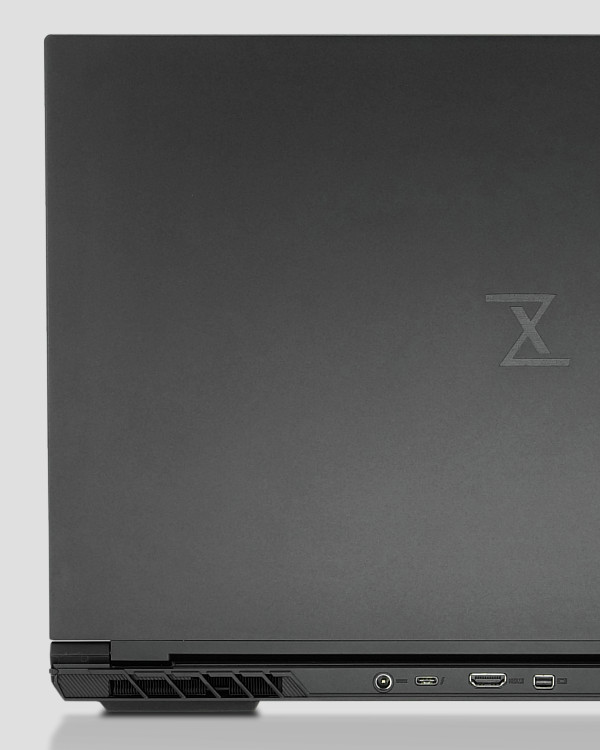
On the material side, the 17.3 inch Linux workstation laptop relies on a combination of sturdy plastics (display frame and base unit) and matte black aluminum (display upper shell and bottom panel) for even increased stability on the Gemini 17's outer shells for safe transportation.
The large clickpad with integrated mouse buttons measures 119 x 71 mm, while the keyboard with integrated full-size numpad features a practical per-key multicolor backlight for working in dim environments.

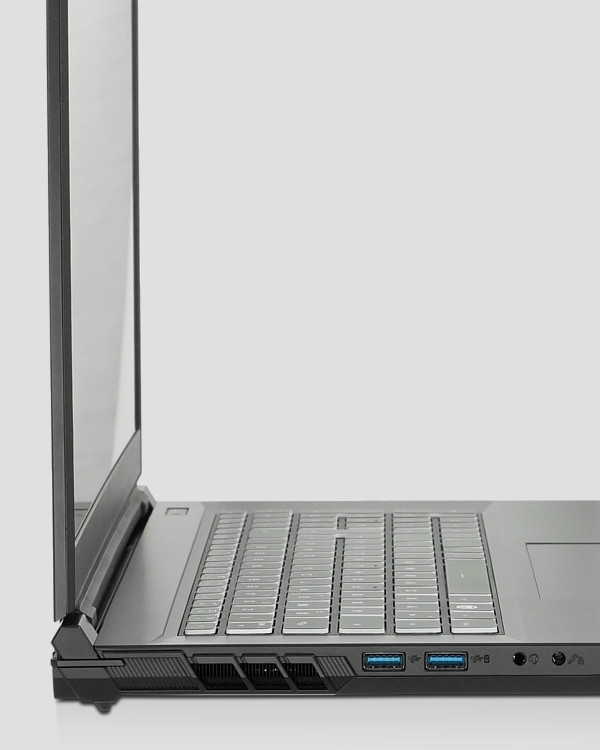
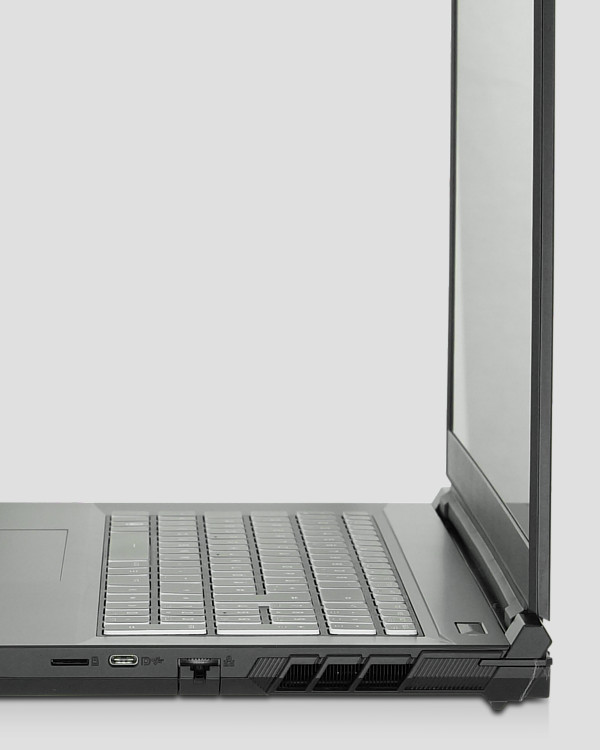
High-performance graphics for
fast renders and gaming
While the power-saving Iris Xe Graphics integrated in the Core i7 and i9 CPU takes care of simple all-day graphics calculations, high-performance graphics processors from NVIDIA take over this job for demanding tasks, such as gaming or rendering purposes.
In the Gemini 17, you have the choice between the NVIDIA GeForce RTX 3070 Ti with a TGP (= Total Graphics Power) of 110 watts and 8 gigabytes GDDR6 video ram and the GeForce RTX 3080 Ti with 120 watts board power draw and an even twice as big 16 GB graphics memory. Via NVIDIA Dynamic Boost (automatic TGP increase at low simultaneous CPU load), both GPUs can boost their power draw by up to 15 watts).
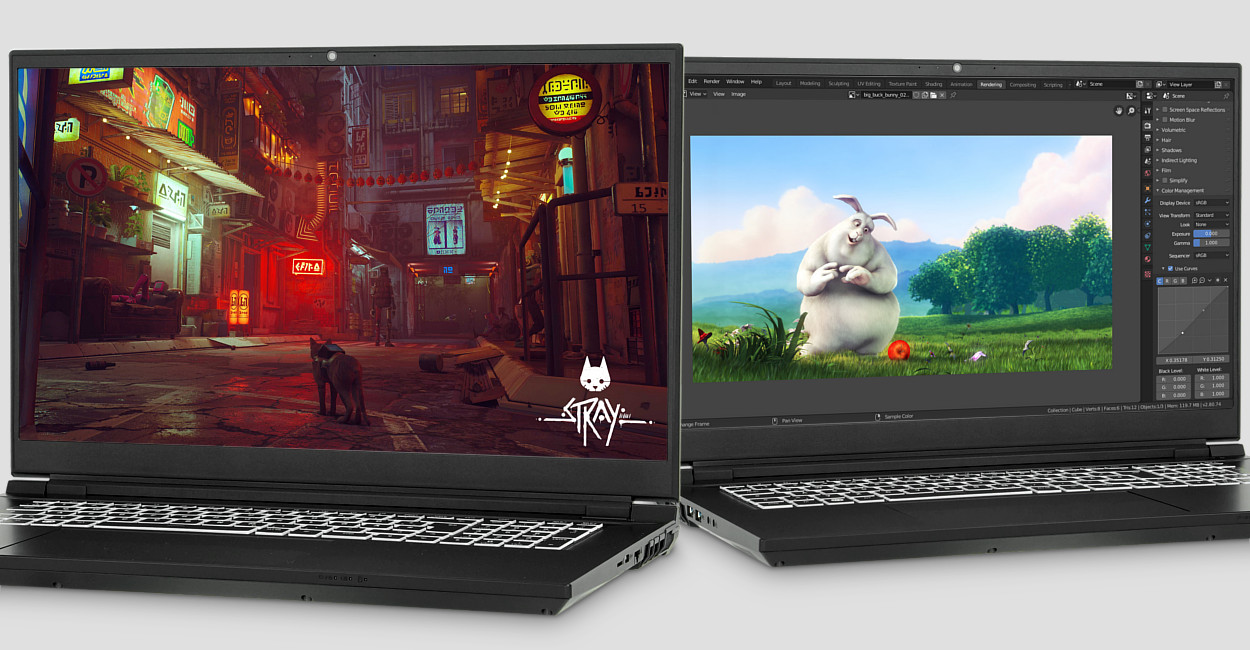
For even more graphics performance with the maximum TGPs allowed by NVIDIA of up to 150 watts (RTX 3070 Ti) or even 175 watts (RTX 3080 Ti), we recommend our flagship model, the TUXEDO Stellaris 17. If your focus is on a maximally slim and ultra-light chassis, though, check out the TUXEDO InfinityBook Pro 16 with a naturally significant lower power target of 70 to 95 watts TGP (RTX 3060 and 3070 Ti).
14 CPU cores for groundbreaking performance
With Intel's 12th generation of their Core processor line-up (code name: Alder Lake), the chip giant is back at the top of performance. Responsible for this performance increase is the innovative hybrid architecture, which is completely new in the PC segment. The total of 14 processing units is divided into particularly energy-saving efficiency cores (8) and performance-optimized performance cores (6).
At low load, the CPU saves energy by using the efficiency cores, while the faster performance cores are additionally switched on when the system is under full load. Thanks to hyper threading technology, they can handle up to 12 processes and even 20 processes simultaneously together with the E cores.
This results in a very high multicore performance for content creators and software developers equally, who this way get a blazing fast business workstation with the TUXEDO Gemini 17.
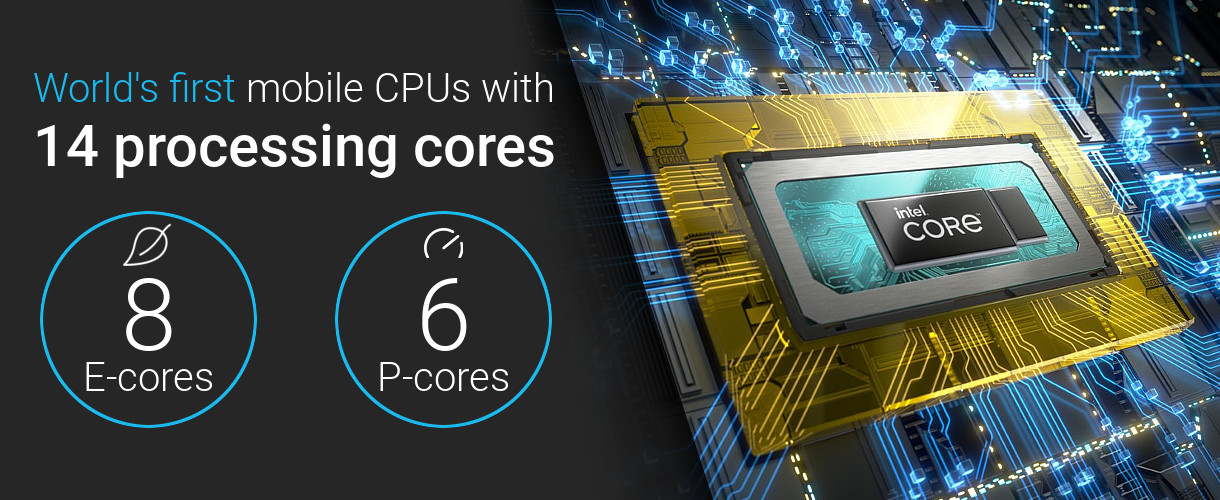
Gamer or content creator?
Choose the best display for your needs!
As a Linux gaming workstation, the TUXEDO Gemini 17 combines both requirement profiles and thus offers customers two display options for their respective demands:
Sophisticated gamers will enjoy the WQHD panel's resolution of 2560 x 1440 pixels as perfect sweet spot between a finely detailed image and high frame rates for an ultra-smooth gaming experience and fast response times with up to 165 Hz refresh rate.
Furthermore, NVIDIA Advanced Optimus automatically drives the notebook display directly through the GeForce graphics when gaming to optimize performance, while NVIDIA G-SYNC dynamically adjusts the panel's refresh rate to match the graphics card's rendering speed, effectively eliminating "screen tearing" and ensuring the smoothest possible gaming experience.
With a 99% coverage of the sRGB color space, the WQHD display is also suitable for semi-professional image editing, while the X-rite color calibrated 4K UHD display with a full 3840 x 2160 pixels is the perfect choice for professional, particularly color-accurate creative work with maximum image details and 100% Adobe RGB color gamut. The high brightness of around 400 nits also allows the Gemini 17 to be used in very bright indoor environments or even outdoors, with a clear and colorful image at all times.

Multiscreen workstation with Mini DisplayPort 1.4, Thunderbolt 4 and HDMI 2.1
The ports setup makes the TUXEDO Gemini 17 a true multi-screen workstation and leaves hardly anything to be desired. The biggest highlight are no less than 3x DisplayPort 1.4 interfaces (2x via USB-C, 1x Mini-DisplayPort) for connecting up to 4 external monitors or for hooking up your VR headset. Combined with the internal display, even a total of 5 screens can be used simultaneously!
While Intel's universal master port, the Thunderbolt 4 interface, connects to the CPU's power-efficient iGPU, the other two DisplayPort interfaces and the HDMI 2.1 port are wired to the NVIDIA GeForce GPU to deliver maximum performance for gaming or VR headsets.
On the data side, both aforementioned USB-C ports are joined by another two USB-A 3.2 Gen1 ports, a microSD card reader and the RJ45 LAN port. The Gemini 17's connectivity setup is rounded off by the jack plugs for microphone and headphones and the obligatory Kensington Lock.

From left to right: 2x USB-A 3.2 Gen1, headphone out, microphone in

From left to right: Power connector, Thunderbolt 4, HDMI 2.1, Mini DisplayPort 1.4, Kensington Lock

From left to right: microSD card reader, USB-C 3.2 Gen2x1, Gigabit-LAN
We are personally there for you Monday to Friday from 9 am to 1 pm and from 2 pm to 5 pm (German time). But also outside these times, you can contact our team with your request by e-mail. You will receive confirmation of receipt within approximately 15 minutes. If not, please feel free to contact us by phone. Please include your order number, the model name of your laptop or PC and as detailed a description of your request as possible. The more details you give us, the faster we can process your request!

